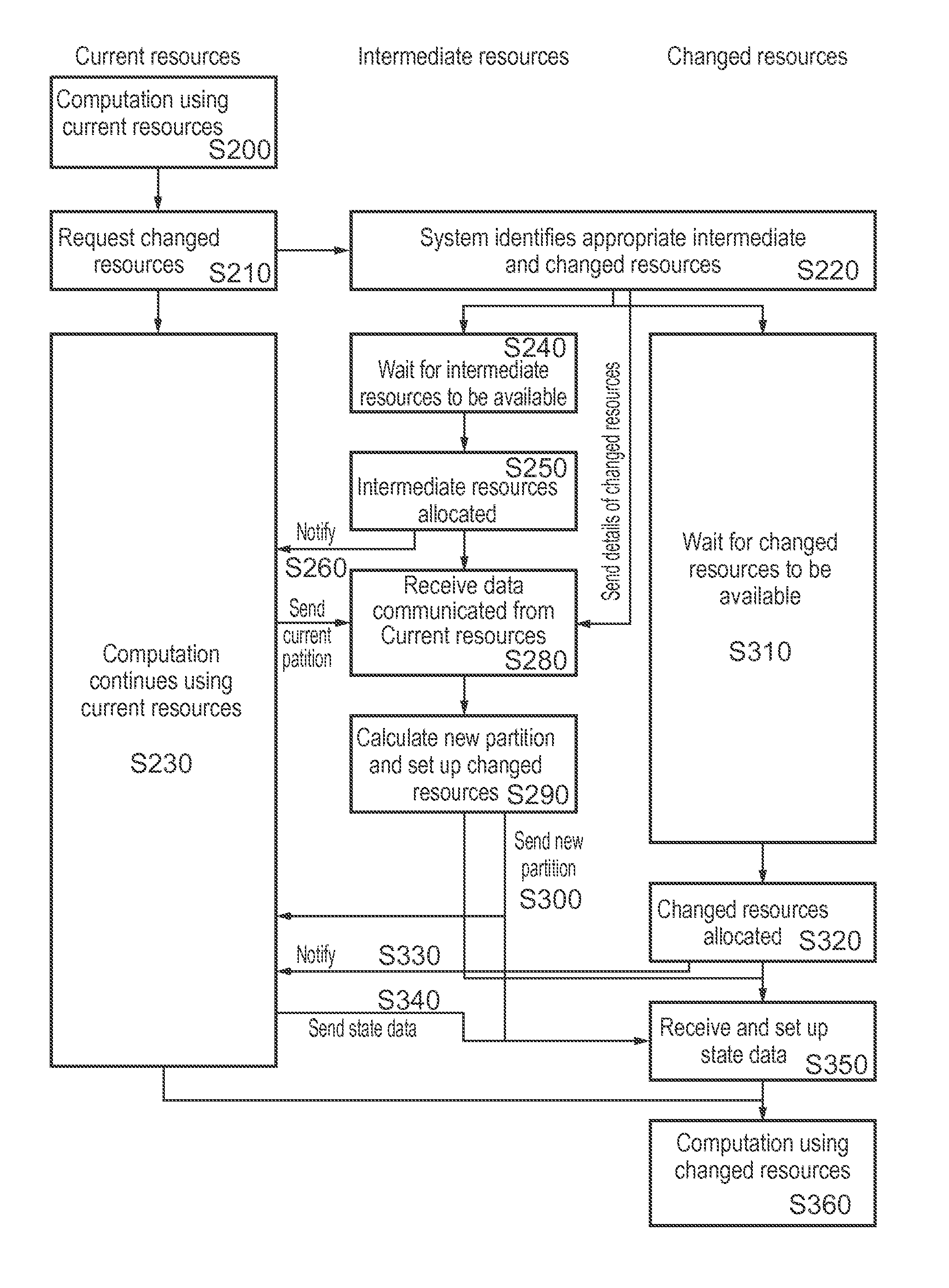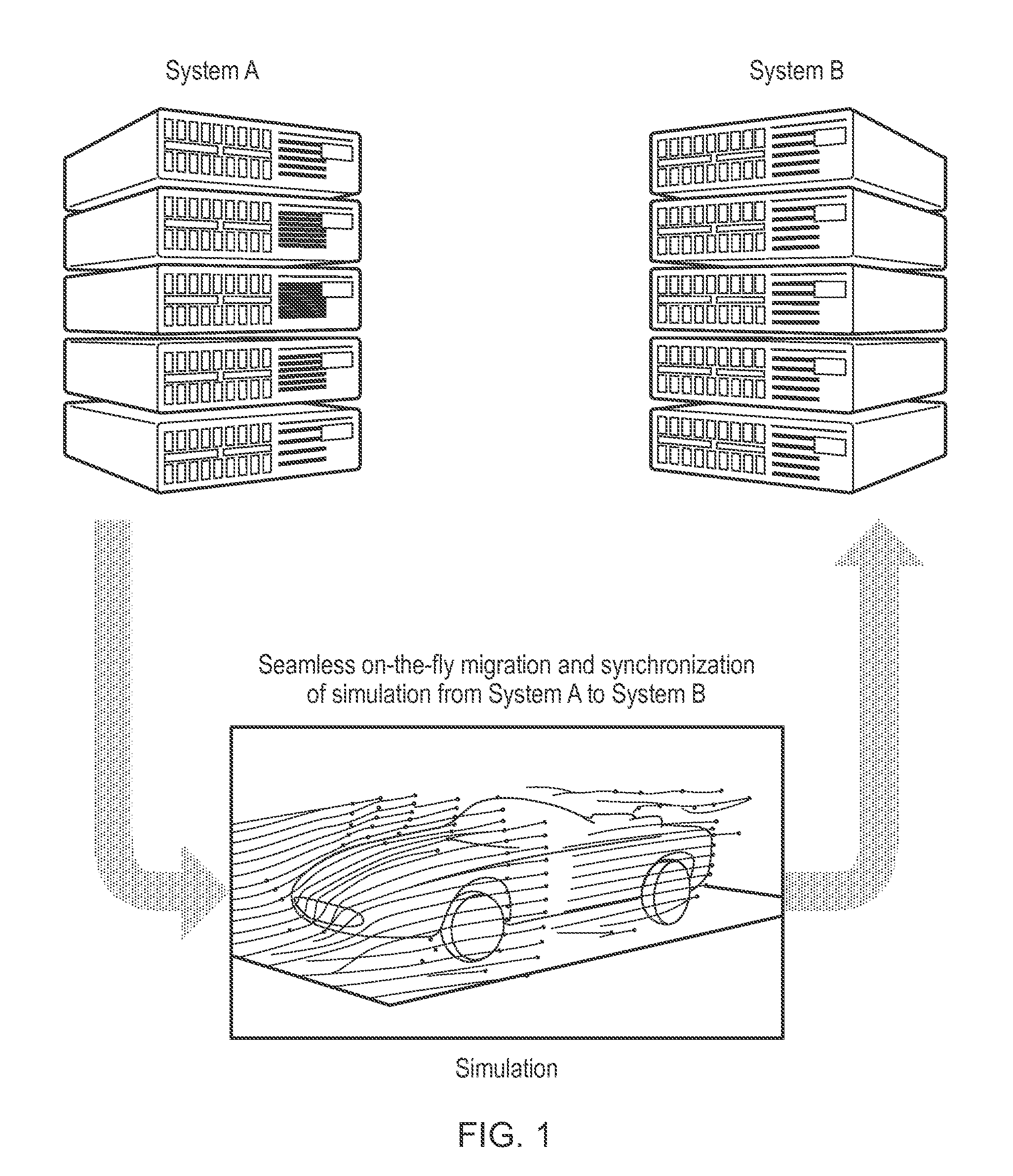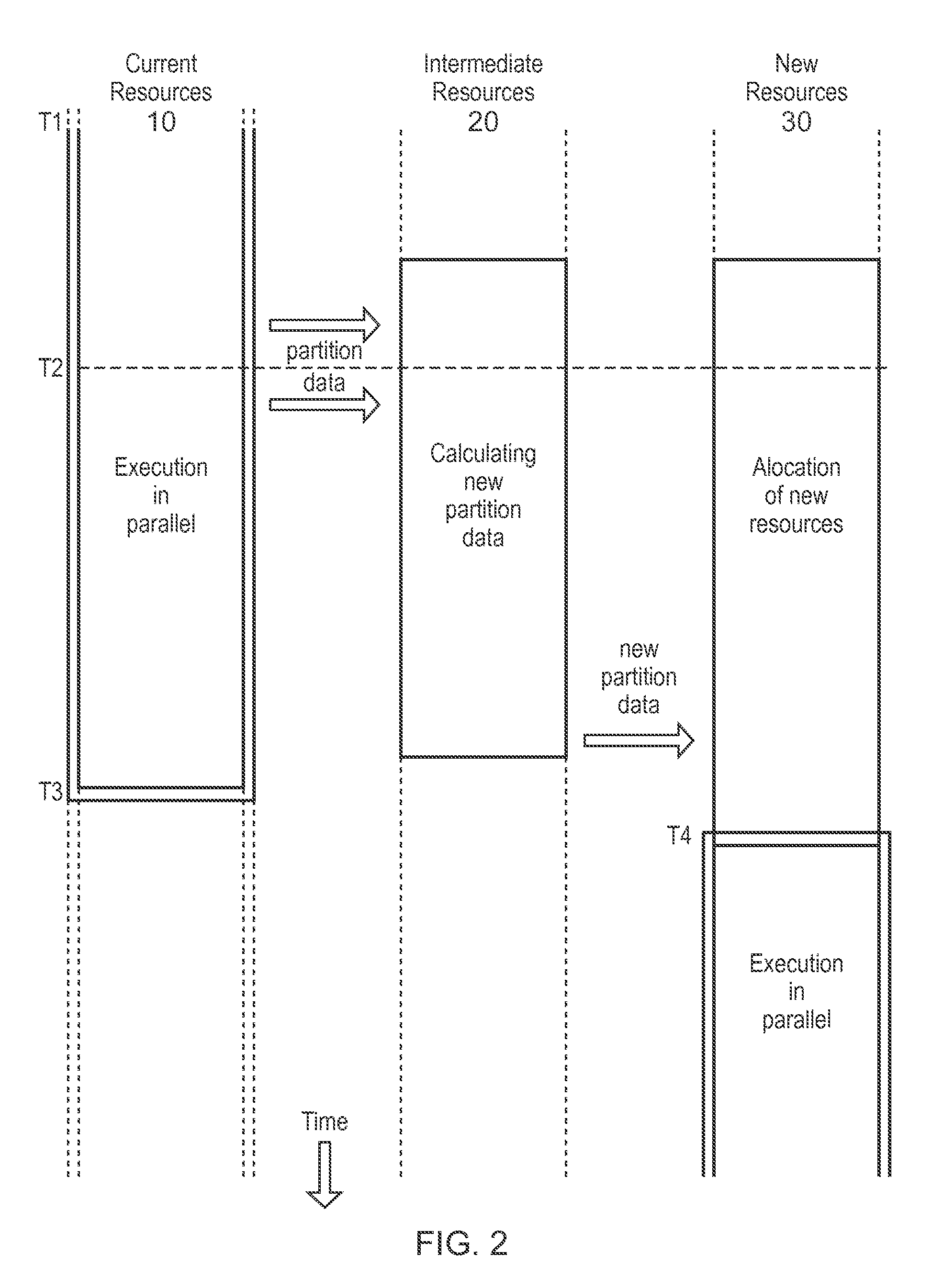Process migration method, computer system and intermediate computing resources
a technology of processing and computing resources, applied in the field of migration of computing processes, can solve problems such as time-consuming, system cannot immediately begin running simulations, and cannot be the cas
- Summary
- Abstract
- Description
- Claims
- Application Information
AI Technical Summary
Benefits of technology
Problems solved by technology
Method used
Image
Examples
Embodiment Construction
[0111]Reference will now be made in detail to the embodiments, examples of which are illustrated in the accompanying drawings, wherein like reference numerals refer to the like elements throughout. The embodiments are described below to explain the present invention by referring to the figures.
[0112]Preferred embodiments of the invention manage the migration of data during the process of moving a running simulation between two different systems or between a different number of processors on the same system. Thus the application finds many applications in the field of high-performance computing, in particular in job scheduling and management.
[0113]FIG. 1 is an overview diagram showing how embodiments of the invention can move a simulation of airflow over a vehicle from execution on system A to execution on system B. The movement is referred to as seamless on-the-fly migration and synchronization. Due to use of the intermediate computing resources, it is not necessary to completely st...
PUM
 Login to View More
Login to View More Abstract
Description
Claims
Application Information
 Login to View More
Login to View More - R&D
- Intellectual Property
- Life Sciences
- Materials
- Tech Scout
- Unparalleled Data Quality
- Higher Quality Content
- 60% Fewer Hallucinations
Browse by: Latest US Patents, China's latest patents, Technical Efficacy Thesaurus, Application Domain, Technology Topic, Popular Technical Reports.
© 2025 PatSnap. All rights reserved.Legal|Privacy policy|Modern Slavery Act Transparency Statement|Sitemap|About US| Contact US: help@patsnap.com



